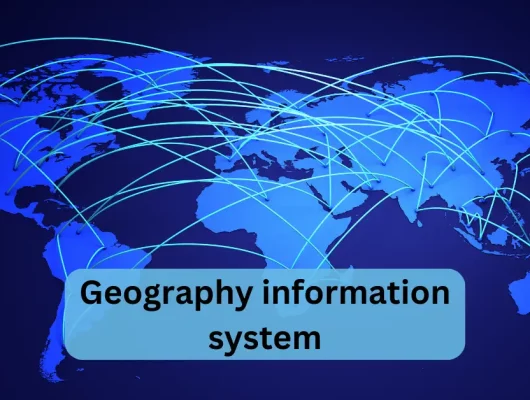Introduction
Science fiction frequently presents lasers as strong, futuristic beams of light, but in reality, lasers are an essential component of contemporary technology. We will delve into the world of lasers in this extensive article, examining what they are, how they have evolved historically, how they function, as well as their many features and useful applications. The history of networking technology traces back to the 1950s when the first computer networks emerged. From ARPANET to the internet’s global expansion, it revolutionized communication. Lasers, or Light Amplification by Stimulated Emission of Radiation.
Historical Overview
Albert Einstein established the theoretical groundwork for the laser concept in the early 20th century with his theory of stimulated emission. But it wasn’t until 1958 that Arthur Schawlow and Charles Townes created the first functional laser, which was a huge turning point in the development of technology. Since then, lasers have developed and been used in many different industries.
How does a laser work?

“Light Amplification by Stimulated Emission of Radiation,” or “lasers,” are machines that produce powerful, extremely focused beams of coherent light. Let’s investigate the intriguing science underlying their functioning.
eserved and readable over long distances because of the laser light’s coherence and monochromaticity.
Manufacturing and Materials Processing
Lasers are essential in the manufacturing industry. They offer excellent accuracy and efficiency and are used in industries for cutting, welding, and engraving. For example, laser cutting machines can precisely cut complex patterns out of a variety of materials, such as plastic and metal.
Entertainment and Display
The entertainment industry has been significantly impacted by lasers as well. Lasers are used in laser light shows, projectors, and displays to produce amazing visual effects. These days, it’s common to see these applications at planetariums, theme parks, and concerts.
Scientific Research
Lasers are used in laboratories for the study of matter, atomic structures, and even for producing ultrafast, intense laser pulses. Scientists can investigate fundamental questions about materials, chemistry, and the universe with the help of these potent laser systems.
The Science Behind Laser Operation

The method by which lasers function is called stimulated emission. The manipulation of atoms or molecules to higher energy states, which results in the creation of an unstable condition, is the fundamental step in this process. These excited particles release photons in a well-organized and coherent manner upon returning to their ground state. After that, the light is amplified to create a strong, focused beam.
Laser Components
Knowing the essential parts of a laser system is crucial to comprehending how lasers operate:
Active Medium
The substance that emits light within the laser is known as the active medium. The wavelength and power of the laser are affected by the active medium selection.
Optical Cavity
The optical cavity of a laser is made up of mirrors that create a closed space where light bounces back and forth. The light is amplified by this bouncing and eventually produces a laser beam.
Energy Source
An outside energy source is needed to excite the atoms or molecules in the active medium. Depending on the kind of laser, this source may be electrical, optical, or even chemical.
Characteristics of Lasers
Lasers are distinguished from other types of light sources by their special qualities. These characteristics, which are essential to their diverse applications, comprise:
Monochromaticity
A single color or wavelength is emitted by lasers, producing a distinct and pure color. This contrasts sharply with traditional light sources, which produce a wide range of colors.
Coherence
The coherence of laser light is one of its distinguishing characteristics. When light waves are coherent, they are in phase with one another. Said another way, this precise alignment of the waves produces a narrow and concentrated beam. Because of this property, lasers are able to carry out precise tasks that are not possible with incoherent light sources.
Collimation
The characteristic of a laser beam that stays parallel over long distances is called collimation. A laser beam does not considerably disperse along its path, in contrast to the diverging beam of a flashlight. Because of this, it is extremely appropriate for a wide range of applications, particularly those that call for long-range accuracy.
High Intensity
Because so many photons are concentrated into one coherent beam, laser light has a very high intensity. Because of their high intensity, lasers can precisely perform tasks like cutting, welding, and engraving.
Practical Uses of Laser Technology

Because of their special qualities, lasers have revolutionized a number of fields. Let’s examine a few of the useful uses that make them essential in today’s world.
Medical and Surgical Applications
Thanks to their accuracy and low tissue damage, lasers have become an indispensable tool in the medical and surgical fields. They are employed in a variety of operations, such as tumor excision, dental work, and eye surgeries.
Communication
Lasers have impacted the telecommunications industry significantly. Lasers are utilized in fiber optic cables, which are extensively used in data transmission, to send data over long distances with little signal loss.
Key Differences between Flashlights and Lasers
Although both lasers and flashlights produce light, there are a number of key differences between them. Gaining an understanding of these variations can help one better appreciate the special powers of lasers.
Light Source
Light-emitting diodes (LEDs) or incandescent bulbs are the common light sources used in flashlights. The light emitted by these sources lacks phase consistency and is not aligned, hence it is called incoherent light. Lasers, on the other hand, produce coherent light, which has perfectly aligned and phased light waves.
Beam Focus
A flashlight’s beam of light is typically divergent rather than tightly focused. Stated differently, it expands as it moves away from the source. For general illumination, flashlights are therefore appropriate. Lasers, on the other hand, generate a narrow, concentrated beam. Over extended distances, the laser beam does not considerably disperse and stays concentrated. Because of this characteristic, lasers are perfect for tasks requiring accuracy and precision, like laser cutting and engraving.
Applications
The applications of lasers and flashlights are significantly impacted by the variations in beam focus and light source. Lamps, torches, and flashlights are common examples of devices that use flashlights for general illumination. Lighting up a room or outdoor area is a suitable use for them because they distribute light evenly and broadly. However, lasers are useful in applications where accuracy and energy focus are needed. They are employed in scientific research, medical procedures, material cutting and engraving, and fiber optic communication.
Conclusion
In conclusion, lasers have greatly improved our lives and revolutionized technology. Their distinct qualities, accuracy, and adaptability render them invaluable across multiple sectors, encompassing healthcare, manufacturing, communication, and entertainment. To fully appreciate the importance and potential of lasers, one must comprehend the science underlying them and the applications they are used for.
FAQs
1. What does “LASER” stand for?
“Laser” means “Light Amplification by Stimulated Emission of Radiation.” This acronym emphasizes the amplification of light through stimulated emission and encapsulates the basic ideas behind how lasers work.
2. Are lasers harmful to the human eye?
Indeed, there is a chance that human eyes could be harmed by exposure to intense laser beams. Since the retina is extremely sensitive to light, direct exposure to laser light can cause damage to it. When using lasers, it is essential to take precautions and wear the proper protective eyewear to avoid eye injuries.
3. Can lasers be used in military applications?
Indeed, there are a number of military uses for lasers. Lasers are used by laser-guided weapons, like laser-guided missiles and bombs, to precisely target and guide their projectiles. To help with precise aiming and firing, laser range finders are also used to measure the distance to a target.
4. How do lasers benefit the field of telecommunications?
In particular, lasers play a key role in long-distance data transmission in telecommunications. Lasers are used in fiber optic cables to transmit data through light pulses. Laser light’s coherent and monochromatic properties guarantee that the data stays clear and doesn’t deteriorate over long distances.
5. What is the most powerful laser in the world?
The “Extreme Light Infrastructure” (ELI) laser facility in Romania is one of the most potent lasers in the world as of my most recent knowledge update in 2022. ELI is well-known for creating ultrafast, extremely high-intensity laser pulses for cutting-edge scientific studies.







